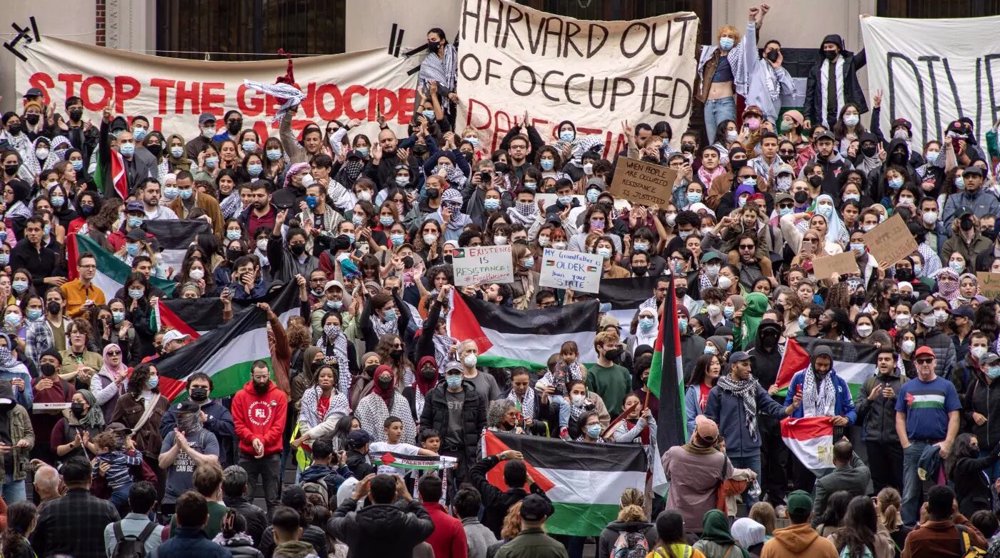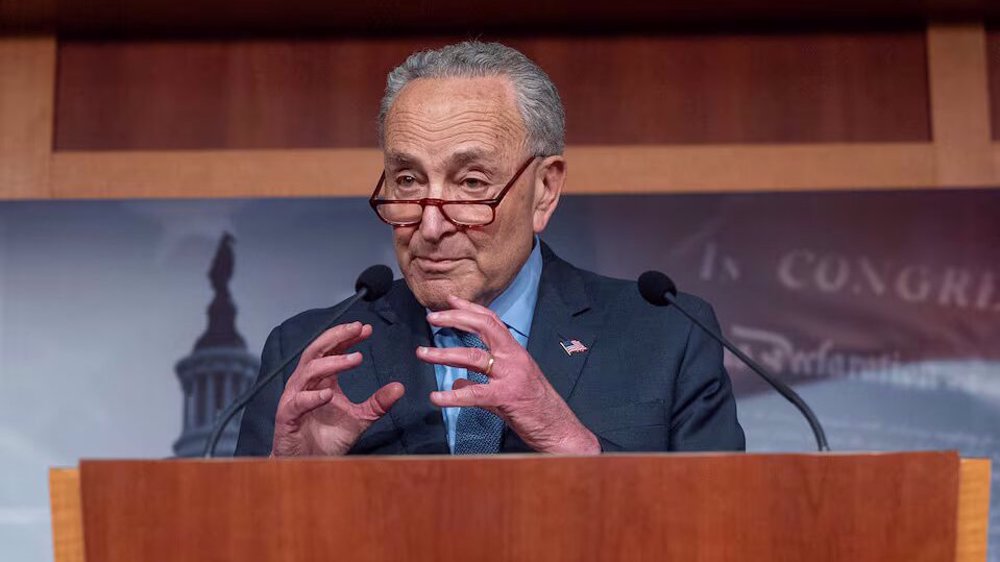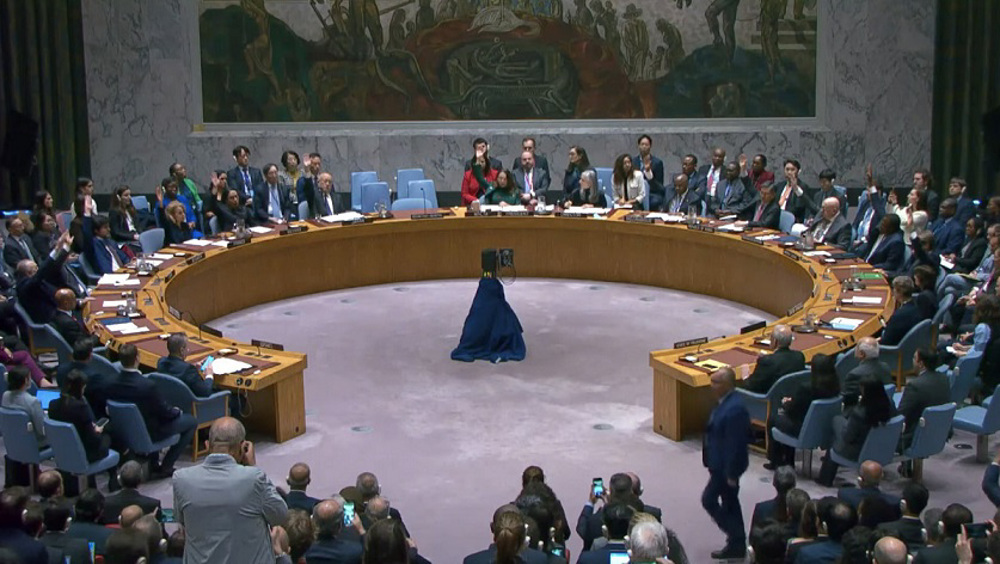Autarky and trade wars: What does economic theory say? Part I
By Mahdi Amirisefat
US President Donald Trump has just officially announced steep tariffs on imported steel and aluminum, and has even hinted more tariffs on other imports, including automobiles from Europe, therefore indicating a revert to “autarky” style policies and what political economists have called “closure” and economic protectionism. Autarky is the state of total resistance to imports in the economic sector, creating a state of self-sufficiency and independence from other countries, and instead advocating and backing domestic production, regardless of the expenses it imposes on national economy and the livelihoods of citizens.
Protectionism usually entails high tariffs and the barring of imports through various other means, including tough import laws. Although the US is far from becoming an autarky, pursuing protectionist policies by a country that has always been an advocate of globalization, free trade, open markets and laissez-faire economics via a Republican president might seem a surprising move. However, Trump’s move is not as far-fetched and baseless as it might initially seem. Based on the Heckscher–Ohlin theorem, building on David Ricardo's theory of comparative advantage, the citizens of a country left to themselves and the free market, will export products that use their abundant and cheap factors of production (either capital or labor), and import products that use the country’s scarce factors (that again can be either capital or labor) as they are cheaper to import than produce domestically. This is exactly where the government might choose to disrupt the natural choice of citizens and “protect” the nation’s economic sector that relies on scarce factors.
Basically, given that the main factors of production are capital and labor, a capital intensive country like the US would prefer open financial markets, but would like to protect labor intensive factors, for instance steel, from imports, as the natural tendency of the American economy is to import labor intense (scarce factor) production. Hence the government, like the Trump administration, might decide to protect such sectors, usually through tariffs. So logically, the tariffs proposed by Trump would produce a group of concentrated winners (domestic steel and aluminum manufacturing industries or the scarce factor) and create a group of losers (those who use imported steel in more advanced industries based on knowledge/capital, and consumers, or the abundant factor).
So for example, given that 140,000 Americans work in steel-producing industries (scarce factor) they will be the main benefactors of import tariffs. However, such tariffs come with a price tag for the 6.5 million who work in steel-consuming industries (abundant factor).

But besides the technical aspects of tariffs, do tariffs actually work and help make countries “great again?” Besides ideological tendencies that might influence a prompt, but imprecise, response to such a question, it seems there is no hard and fast answer to such a question, and importantly the answer would be different for different sectors of the economy.
Here I will take a brief look at the theoretical reasoning of the proponents and opponents of tariffs or economic closure in order to get a feeling of the overall debate about tariffs in the international market. In my next following article, I will also examine the actual history of initiating such protectionist policies, or in the words of Trump, "trade wars."
Proponents of protection and tariffs
Renowned scholars such as Dani Rodrik in his 2007 book “How to Save Globalization from its Cheerleaders,” have argued that the champions of globalization and free markets have actually initially “protected” their infant industries through tariffs and strict importation laws. These countries have usually implemented “import substitution industrialization” policies, simply known as ISI policies among economists and political scientists.
Countries like China, Malaysia and even Japan, who at the moment are staunch supporters of fully open markets and trade, were at a time advocates of domestic production protection through tariffs and other taxation mechanisms. In his book, Rodrik illustrates that the major benefiters from economic globalization and international trade are those nations who actually heavily protected their economies while industrializing, like Vietnam, China, Japan and India. Rodrik asserts, “Simply put, countries that have benefited the most from globalization are those that did not play by the rules.” Maybe this is why Donald Trump constantly claims that the US has been a loser in the international market:
We are on the losing side of almost all trade deals. Our friends and enemies have taken advantage of the U.S. for many years. Our Steel and Aluminum industries are dead. Sorry, it’s time for a change! MAKE AMERICA GREAT AGAIN!
— Donald J. Trump (@realDonaldTrump) March 5, 2018
Of course such policies will buy the wrath of countries the tariffs are imposed on and those countries might threaten similar measures, but the advocates of protection will argue this is exactly why such policies are correct and should be pursued: Because they irritate those who have been benefitting from the status quo.
Trump’s restrictions on imports and what has been seen by traditional Republicans as an attack on “free markets” are also buying him mounting pressure from Trump’s own party which has been a bastion for laissez-faire economics in the US, but such criticism is more an ideological component of the Republican party than a purely economic critique. One could hypothetically ask, if protection works -- as I will show has worked in certain cases like Japan -- will the GOP support tariffs in favor of certain sectors of the US economy? The answer is probably negative.
Comparative political economist Frances Rosenbluth emphasizes that for four decades, up until the 90s, Japan had pursued a constant policy of protection where “Japan's markets, with the government's help had been notoriously hard to crack.”
Consequently, a group of economists have concluded that ISI policies of South East Asian countries and formerly developing countries are not actually as bad as we thought.
In response, other economists have shown that Japan is an outlier in the sense that up until the 90s when it changed its protectionist policies because of American and international pressures, it had pursued closure under the protection and support of the United States based on Washington’s Cold War policy of supporting allies to bolster their economies in response to the Soviet threat. With the demise of the Soviet Union, such policies give way to free market mechanisms and Japan had to adapt to the new realities of international trade by lifting tariffs and ending government subsidies or policies entailing guaranteed buying of domestic production.
Opponents of autarky and protectionist policies
The majority of the modern economic literature is overall critical of autarky and protection and basically states that protectionist policies result in reciprocal measures and have an almost definite negative influence on levels of trade. For instance, based on the Stolper-Samuelson Theorem, the globalization of trade and the openness of countries to unregulated trade will increase the abundance of goods in a country and is especially advantageous for the owners of those industries within a country which require that country’s abundant factor -- either labor or capital (Grieco and Ikenberry, 47).
Based on Geoffrey Garrett’s division, globalization could have different impacts on advanced capitalism depending on whether a country is trade driven or emphasizes capital markets (Garret 2009). Trade-oriented countries (levels of trade as a percentage of GDP) like northern European countries would profit more from the globalization of trade while capital-oriented nations such as Japan and the United Sates would probably prefer more open capital markets relative to freer trade (101-102), therefore might at times attempt to pursue protectionist policies when it comes to their scarce sectors e.g. steel and aluminum or agricultural products.
This is probably why the left/labor in trade inclined advanced capitalism is not as vehemently opposed to free global trade as other countries, because it simply benefits from the dismantling of trade barriers. This is also true about countries like China, South Korea, Singapore, Japan (90s and beyond) and even some Latin American countries like Chile, where a vibrant export economy based on comparative advantage has come to exist.
On the other hand, the uneasy economic relationship of the United States and Japan in the early 90s stemming from disputes over trade regulation and today’s thrust in American politics towards more protection (a common theme in both the campaigns of Donald Trump and Bernie Sanders) are examples of how countries that have a lower level of trade ratio compared with their overall GDP might react to increased globalization and the threat to local production. This said, protection will not necessarily help such economies because protection only protects the smaller segment of the economy (the scarce factor) and the larger abundant factor will suffer as protection via tariffs almost immediately causes reciprocal measures from other nations increasing the price of imports in an economy where domestic production is more expensive than the imported goods.
What are the effects of Trump’s tariffs?
Free international trade has had mixed outcomes in the economies of both advanced and developing countries. Based on the economically renowned Heckscher–Ohlin model theorem I mentioned before, different sectors of a country’s economy are influenced differently by globalized free trade. The relatively scarce factor will sustain a drop in returns and real incomes but the abundant factor will see an increase in real income. If in a country the scarce factor somehow acquires enough political power, it can block open trade and globalization.

This seems to be what has happened in regard to the new steel and aluminum tariffs and their aggressive lobbying in this regard. Also, and even more important, Donald Trump might have concluded the political gains in this sector are worth the risks of causing losses in other sectors.
However, this seems to be a difficult scenario, as the name itself, “scarce”, implies the sector’s relative weakness compared with the sector possessing the “abundant” factor. Given that in the most financially powerful countries of the world, like China, India, the EU and the US, which constitute an important proportion of the world economy, the sectors based on the abundant factor which benefit from free trade are still more politically influential than other sectors of the economy and have control over the political processes (Johnson 2009), it seems yet far-fetched to predict a significant decline in international trade and open markets in the near future. Also, we have to see whether Trump will expand such tariffs to other sectors and if he does, what would be the percentage of the tariffs. Such expanded tariffs seem unlikely, especially unlikely in the case of meaningful high tariffs, because the majority -- consumers and possessors of the abundant factor -- could be disgruntled of the tariffs as they will cause a hike in prices.
If there is one thing one could probably historically claim about free trade and capitalism (I will show this in my next article on the subject), it is that the system is better than its rivals in learning and adjusting itself to the environment and usually imposes the rationale of cost-benefit on politicians.
Citations:
Rodrick, Dani. (2009). “How to Save Globalization From its Cheerleaders.” In Jeffry A. Frieden, David A. Lake, and J. Lawrence Broz, eds. International Political Economy: Perspectives on Global Power and Wealth. 5th ed. New York: W. W. Norton & Company.
Garrett, Geoffrey. (2009). “Capital Mobility, Trade, and the Domestic Politics of Economic Policy.” In Keohane and Milner, eds. (1996). Internationalization and Domestic Politics. New York: Cambridge University Press.
Grieco, Joseph M., and G. John Ikenberry. (2002). State Power and World Markets. New York: W. W. Norton & Company.
Johnson, Simon. (2009) “The Quiet Coup.” In Jeffry A. Frieden, David A. Lake, and J. Lawrence Broz, eds. International Political Economy: Perspectives on Global Power and Wealth. 5th ed. New York:W. W. Norton & Company
VIDEO | Negotiations stalled
Israeli settlers – protected by military – intrude into Al-Aqsa Mosque
VIDEO | Smirking at lies
200 days of genocide: Palestinian resistance prevails over occupation
Ukraine launches drone strikes on Russia's energy sites
VIDEO | Anti-US sentiments grow in Iraq as US military presence unresolved
Jamaica officially recognizes state of Palestine
Raeisi attends inauguration of Iran-built mega multipurpose project in Sri Lanka










 This makes it easy to access the Press TV website
This makes it easy to access the Press TV website